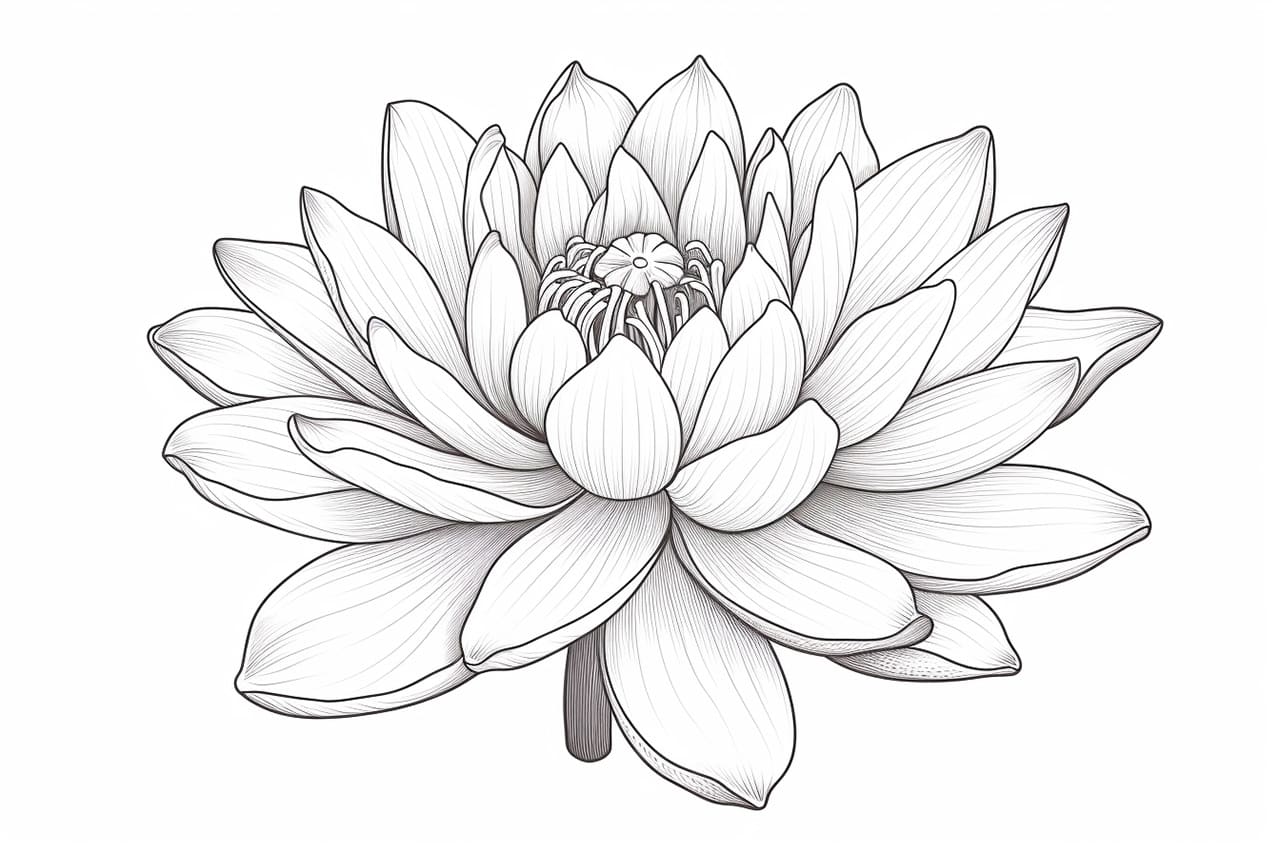Lotus flowers are elegant and beautiful, often associated with purity and spirituality. Their unique shape and delicate petals make them a popular subject for artists. If you’ve ever wanted to learn how to draw a lotus flower, you’ve come to the right place. In this step-by-step guide, I will walk you through how to draw a lotus flower, providing clear instructions and helpful tips along the way. So grab your drawing materials, and let’s get started!
Materials Required
Before we dive into drawing a lotus flower, make sure you have the following materials on hand:
- Drawing paper: Choose a high-quality paper suitable for your preferred drawing medium, such as graphite or colored pencils.
- Pencil: Use a range of pencils, including HB or 2B for sketching and lighter grades like 2H for light shading.
- Eraser: Have a soft eraser handy to correct any mistakes or lighten areas of your drawing.
- Fine-tipped pen: A pen with a fine point will be useful for adding intricate details.
- Colored pencils or markers (optional): If you want to add color to your lotus flower drawing, gather your preferred coloring tools.
Step 1: Sketch the Basic Shape
Start by lightly sketching the basic shape of the lotus flower. Draw an oval shape for the center of the flower and extend two slightly curved lines downwards to create the stem. Don’t worry about making it perfect at this stage; we will refine the details later.
Step 2: Add the Petals
Now, let’s add the petals to our lotus flower. Draw a large petal shape around the oval center, curving it upwards at the edges. Repeat this step, adding more petals around the first one. Lotus flowers typically have multiple layers of petals, so feel free to add as many as you like. Remember to vary the sizes and angles to create a natural look.
Step 3: Refine the Petal Shape
Next, refine the shape of the petals by adding curves and details. Use smooth, flowing lines to give the petals a natural appearance. Pay attention to the curves and contours of each petal, as this will add depth and dimension to your drawing.
Step 4: Draw the Center Details
Now it’s time to focus on the center of the lotus flower. Draw small, circular shapes within the oval to represent the seed pod. Add some lines and dots to create texture and detail. Take your time and observe the reference image or real lotus flowers for guidance.
Step 5: Outline the Stem and Leaves
Move on to the stem and leaves of the lotus flower. Draw a long, slightly curved line for the stem, and add smaller curved lines branching off from it to represent the veins. For the leaves, draw elongated, oval shapes extending from the stem. Remember to vary the sizes and angles of the leaves for a more realistic look.
Step 6: Refine the Details
Now, let’s refine the details of the stem and leaves. Add more curves and lines to make them appear more organic and natural. Pay attention to the direction of the veins on the leaves, as they should follow the shape of each leaf.
Step 7: Finalize the Outlines
Once you are satisfied with the overall shape and details of your lotus flower, darken the outlines using a fine-tipped pen. Be careful and confident with your lines, as this will give your drawing a professional touch.
Step 8: Erase the Guidelines
Carefully erase any visible guidelines and unnecessary pencil marks. Use a soft eraser to avoid damaging the paper or smudging the inked outlines. Take your time during this step to ensure a clean and polished drawing.
Step 9: Add Shading and Texture (Optional)
If you want to add depth and realism to your lotus flower drawing, you can incorporate shading and texture. Use a range of pencils or colored pencils to create shadows and highlights on the petals, stem, and leaves. Consider the direction and intensity of light to determine where to add shading. You can also experiment with different shading techniques to achieve the desired effect.
Step 10: Color Your Drawing (Optional)
If you prefer a colorful lotus flower drawing, now is the time to bring out your colored pencils or markers. Select the appropriate colors and carefully apply them to your drawing. Pay attention to the natural color variations in lotus flowers, such as white petals with pink accents. Blend and layer the colors to achieve a realistic and vibrant result.
Conclusion
Drawing a lotus flower may seem daunting at first, but by following these step-by-step instructions, you can create a beautiful representation of this iconic flower. Remember to take your time, practice patience, and enjoy the process. With practice, you will develop the skills to capture the delicate beauty of lotus flowers in your drawings.
So grab your drawing materials and start creating your very own lotus flower masterpiece today!









